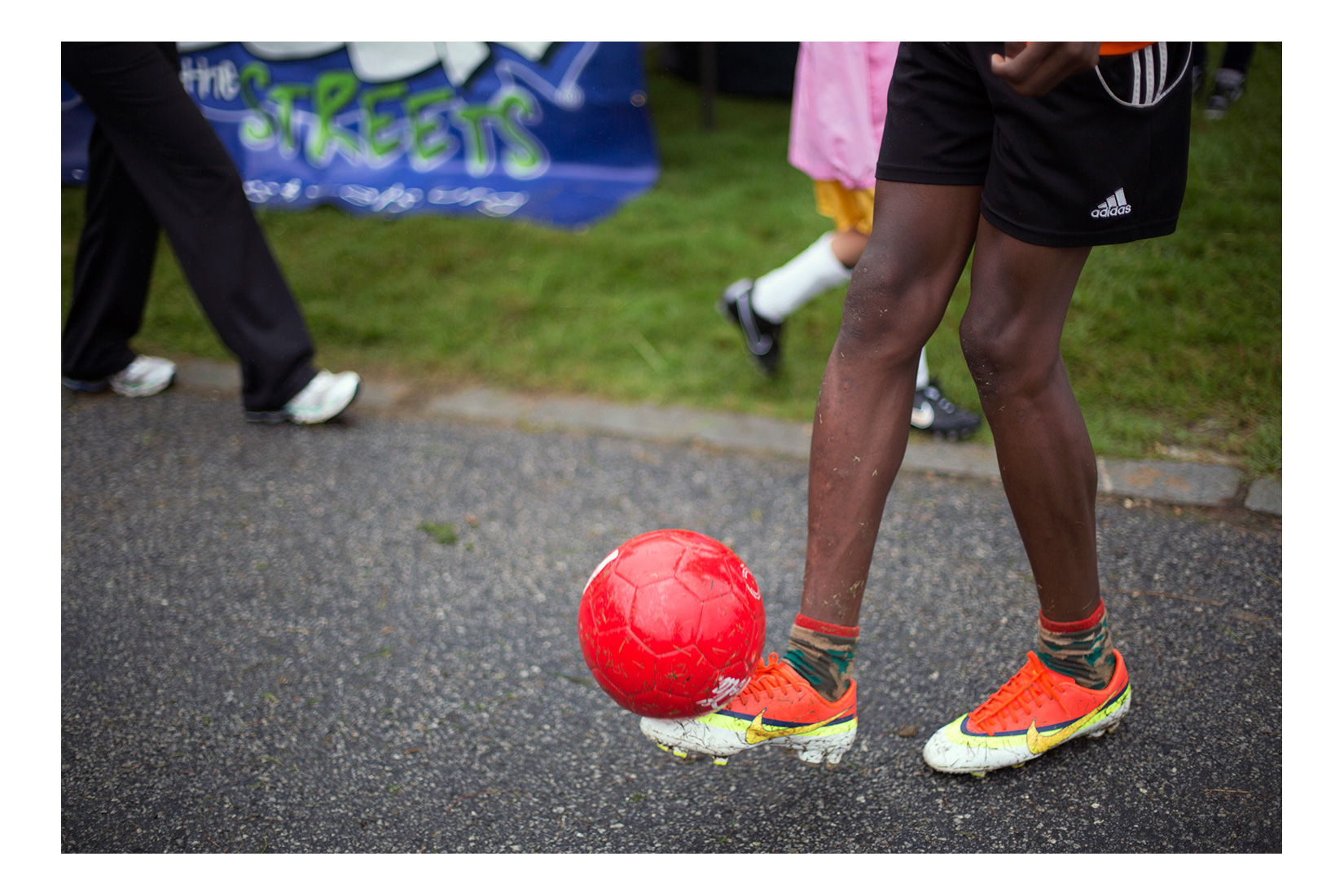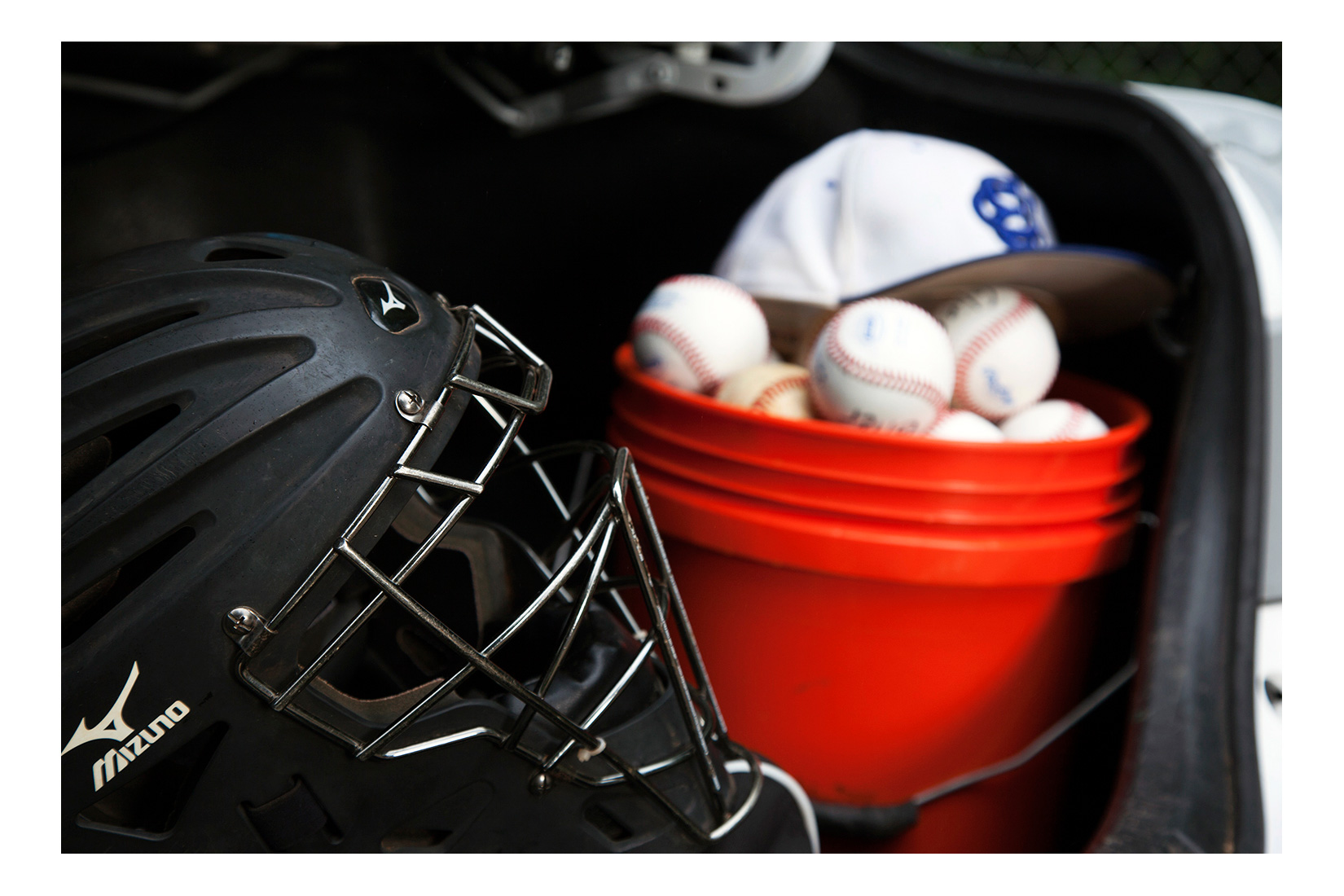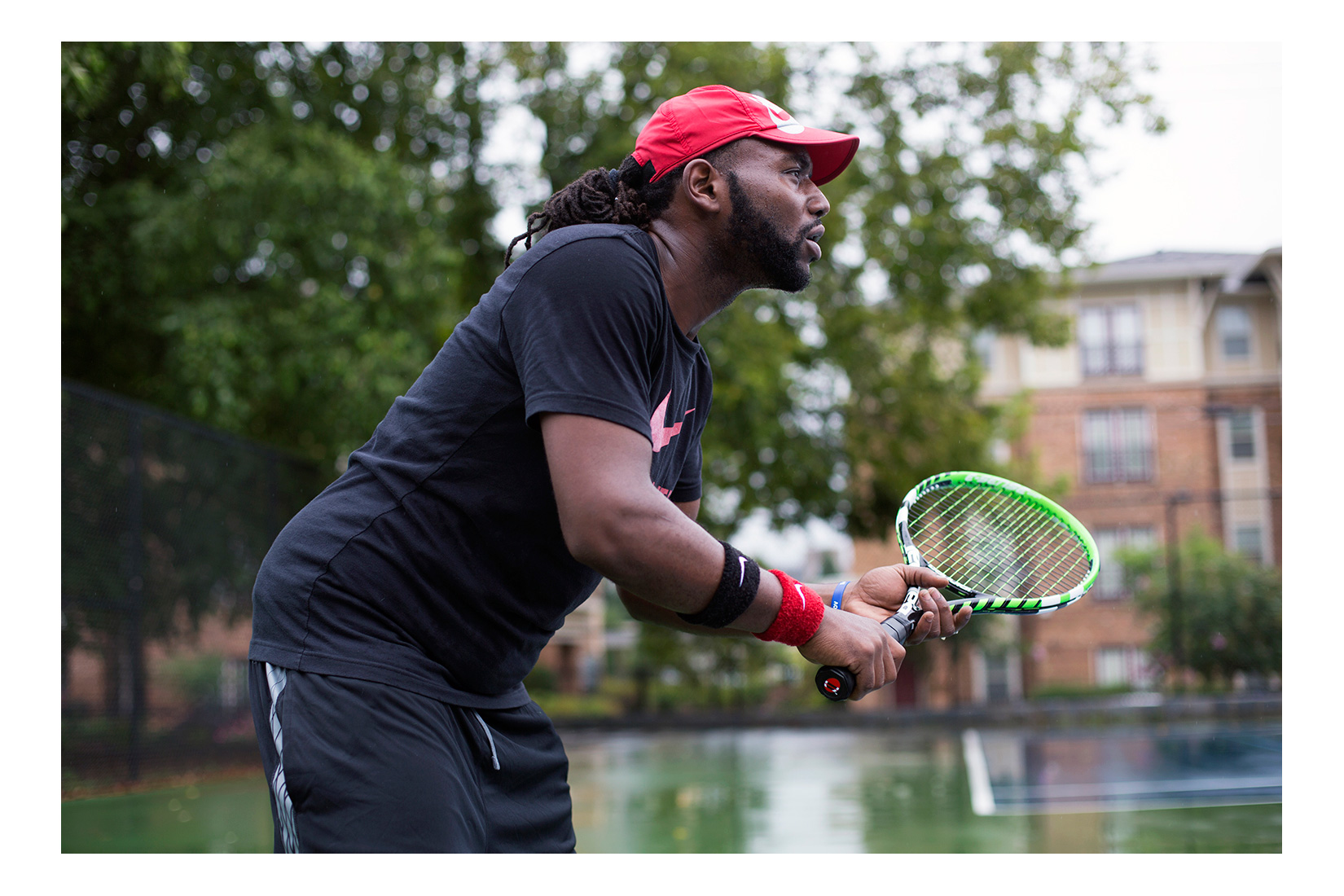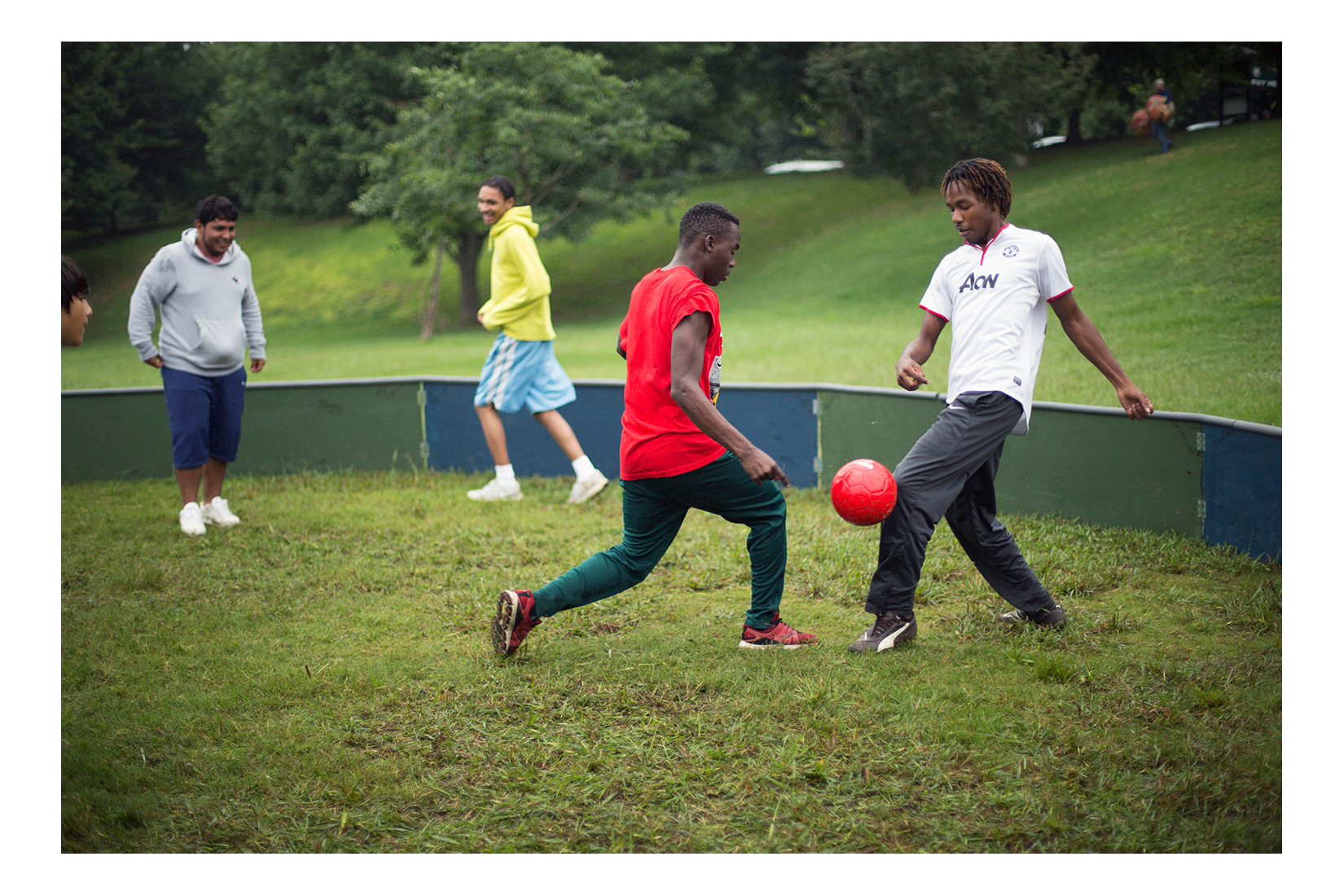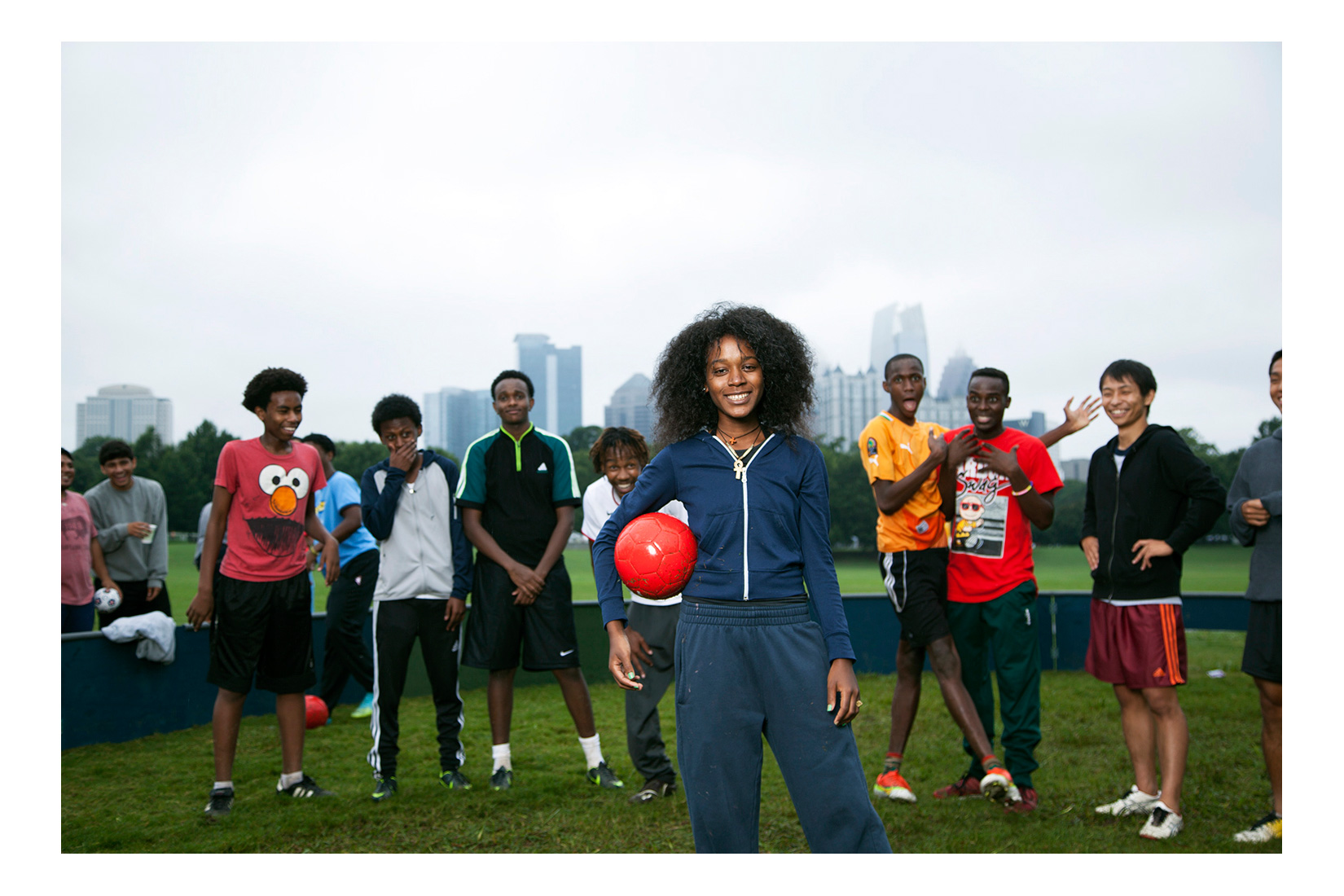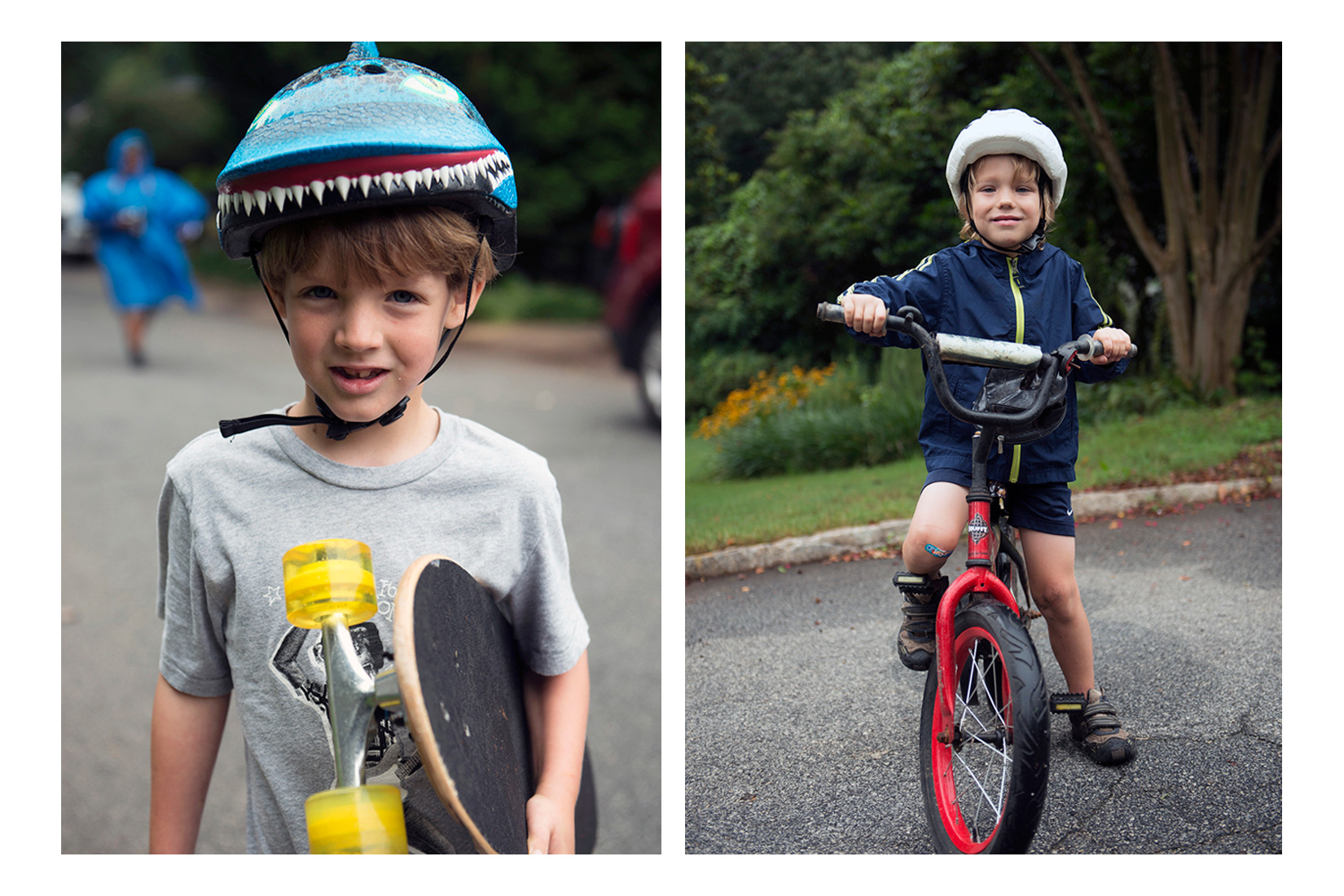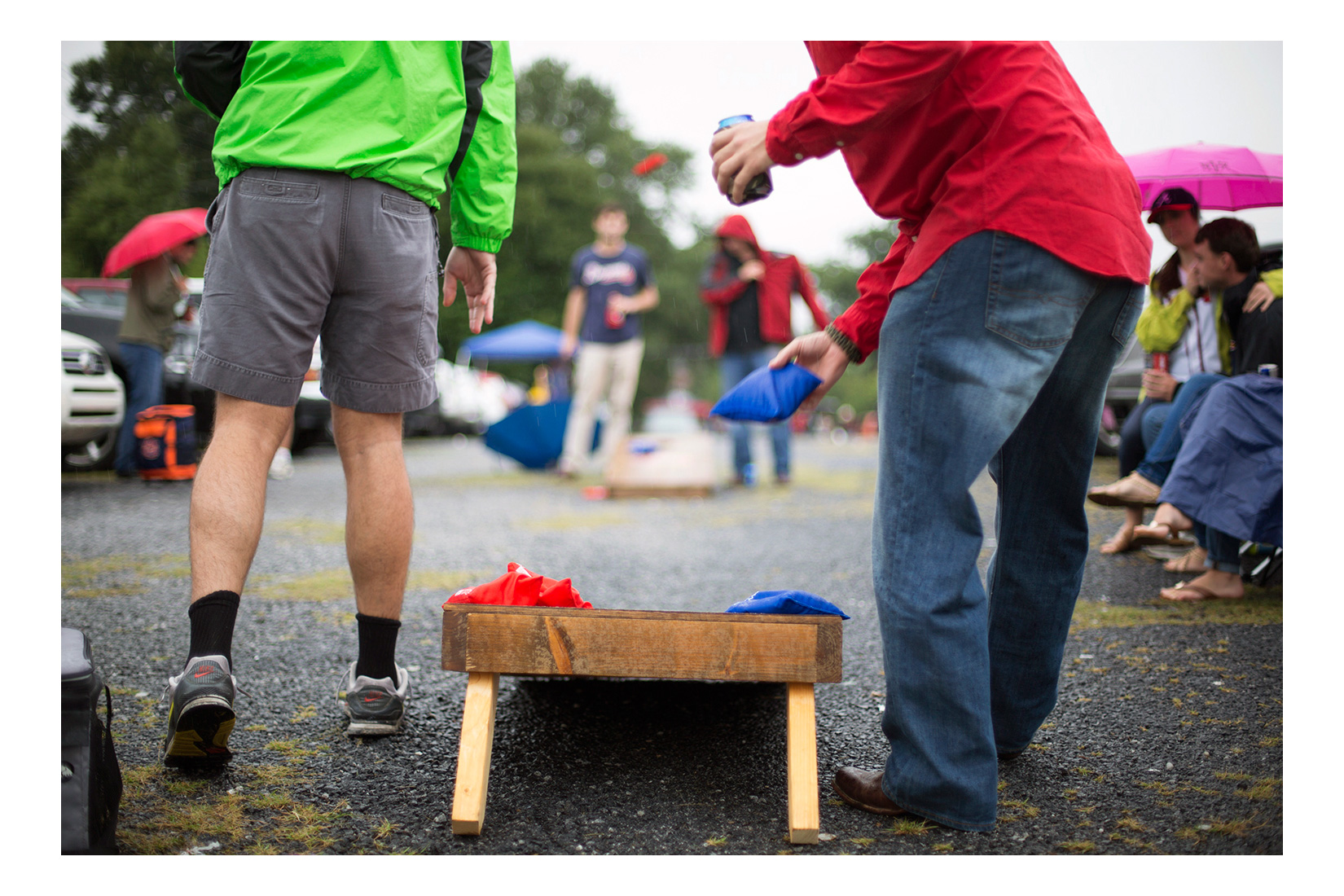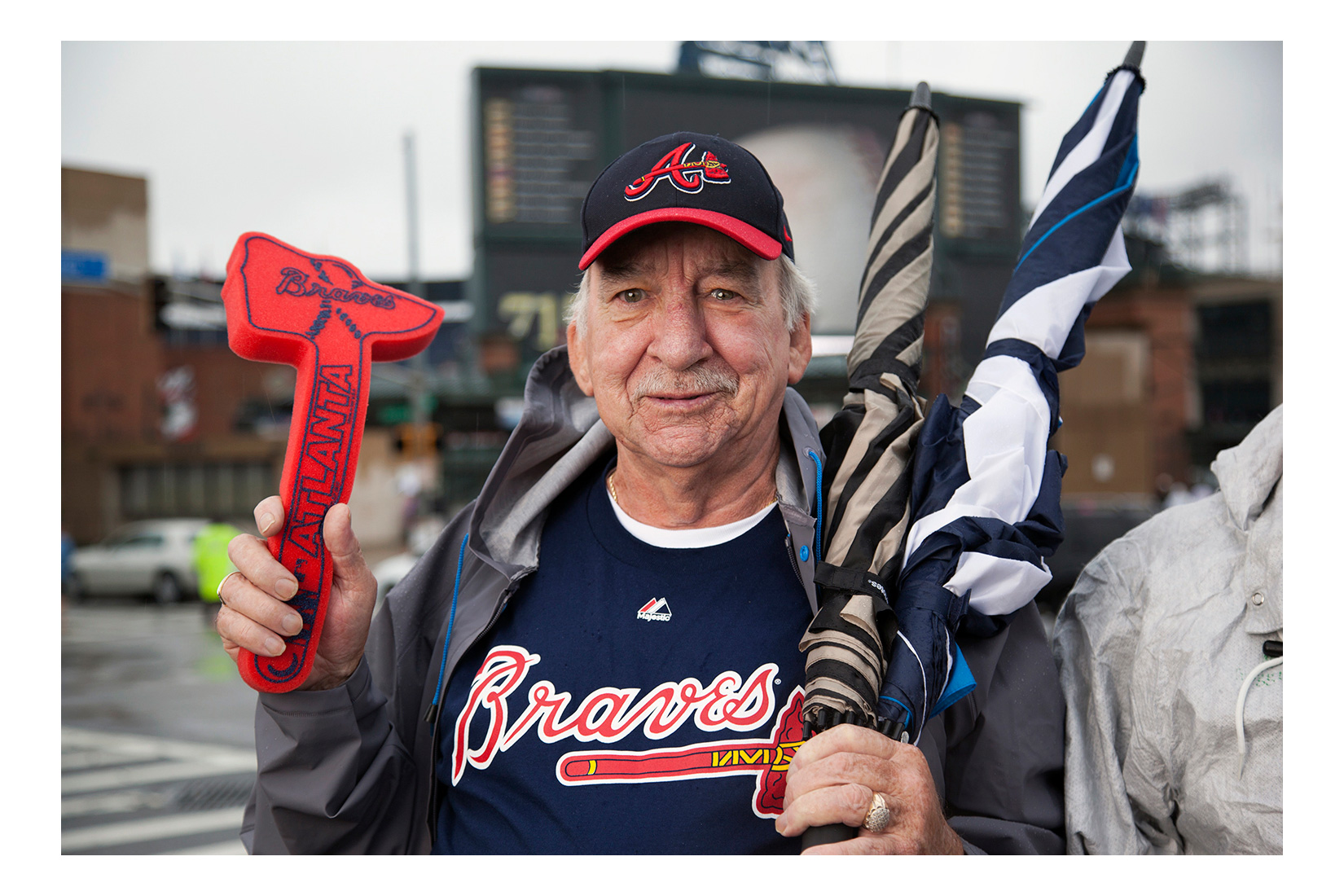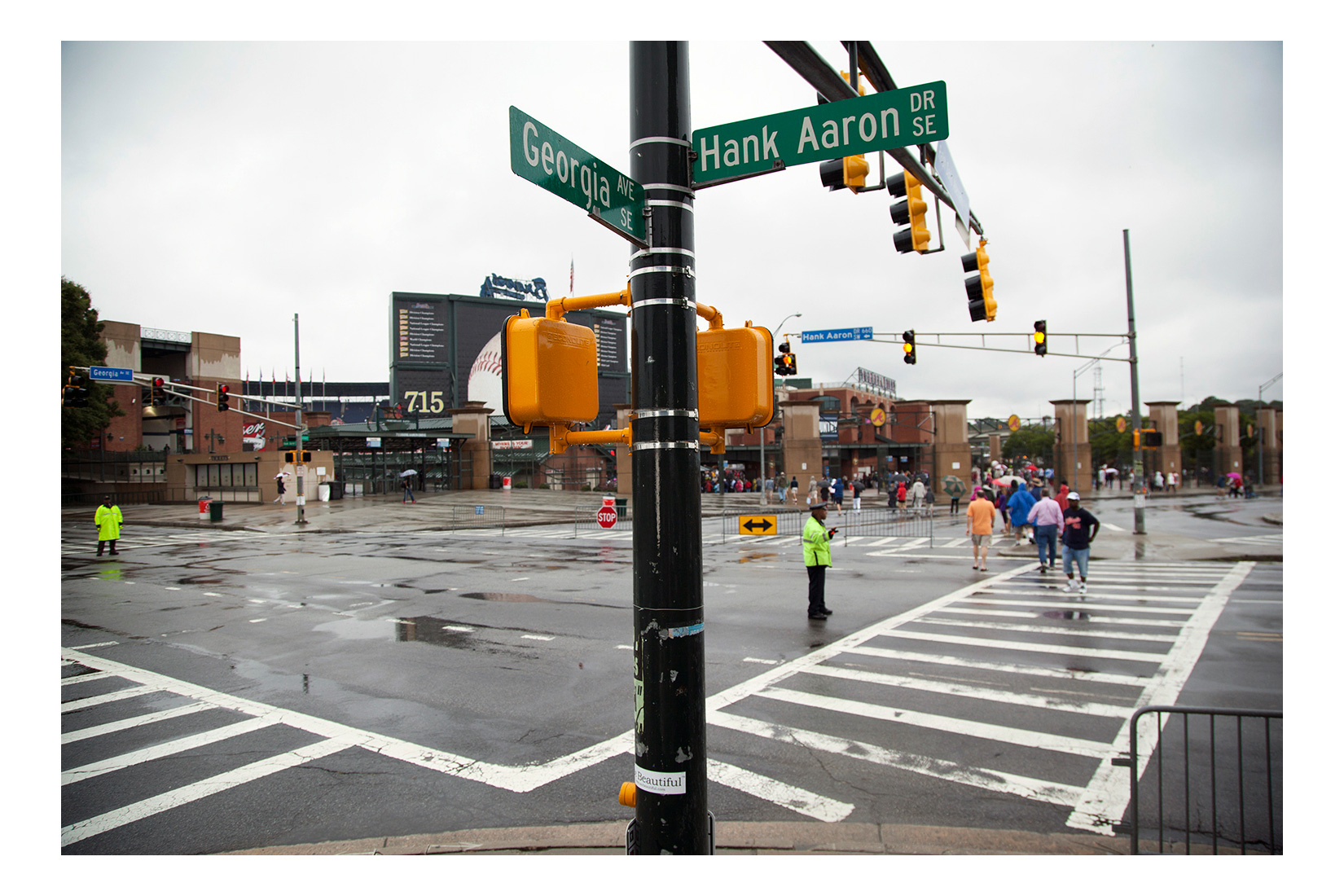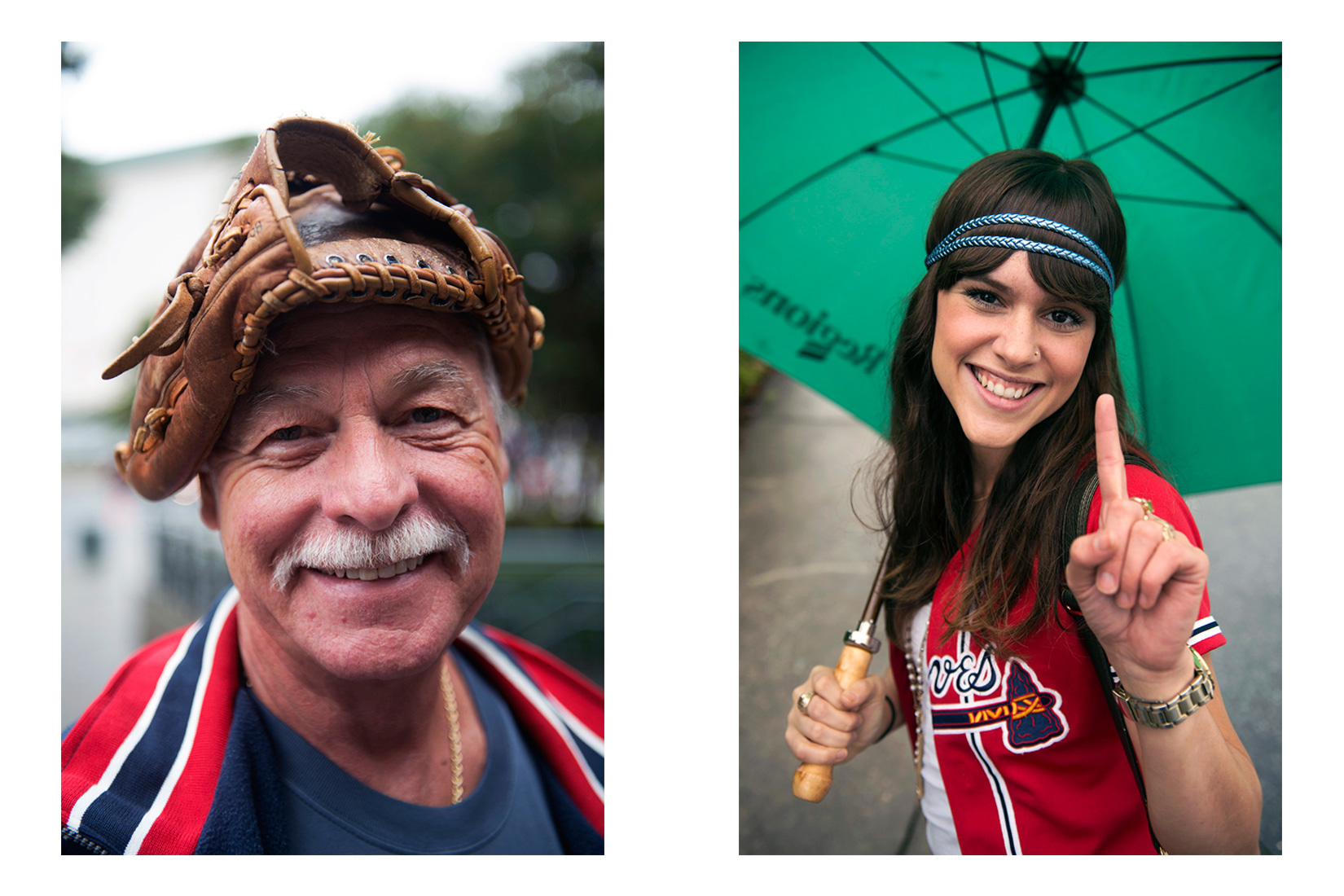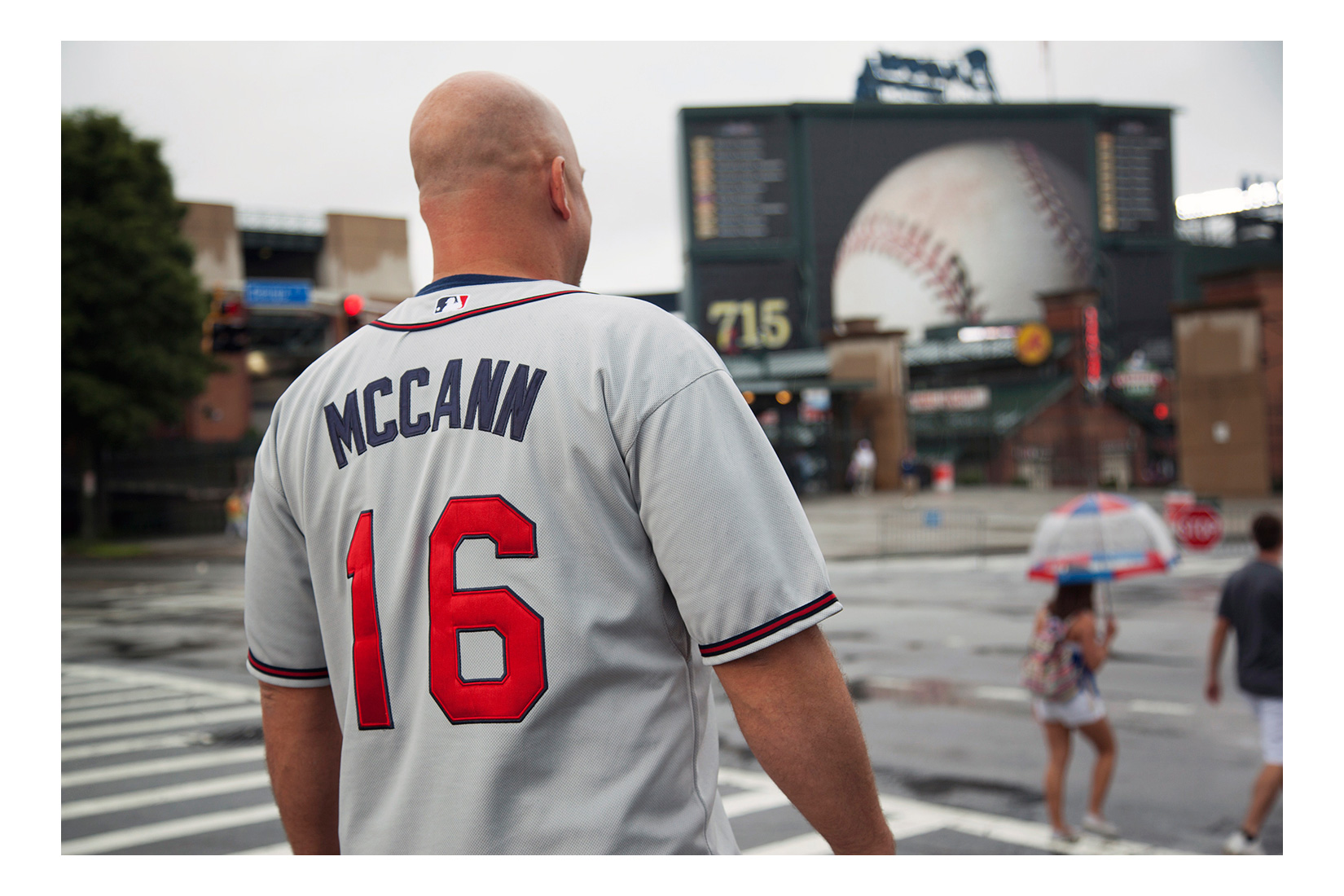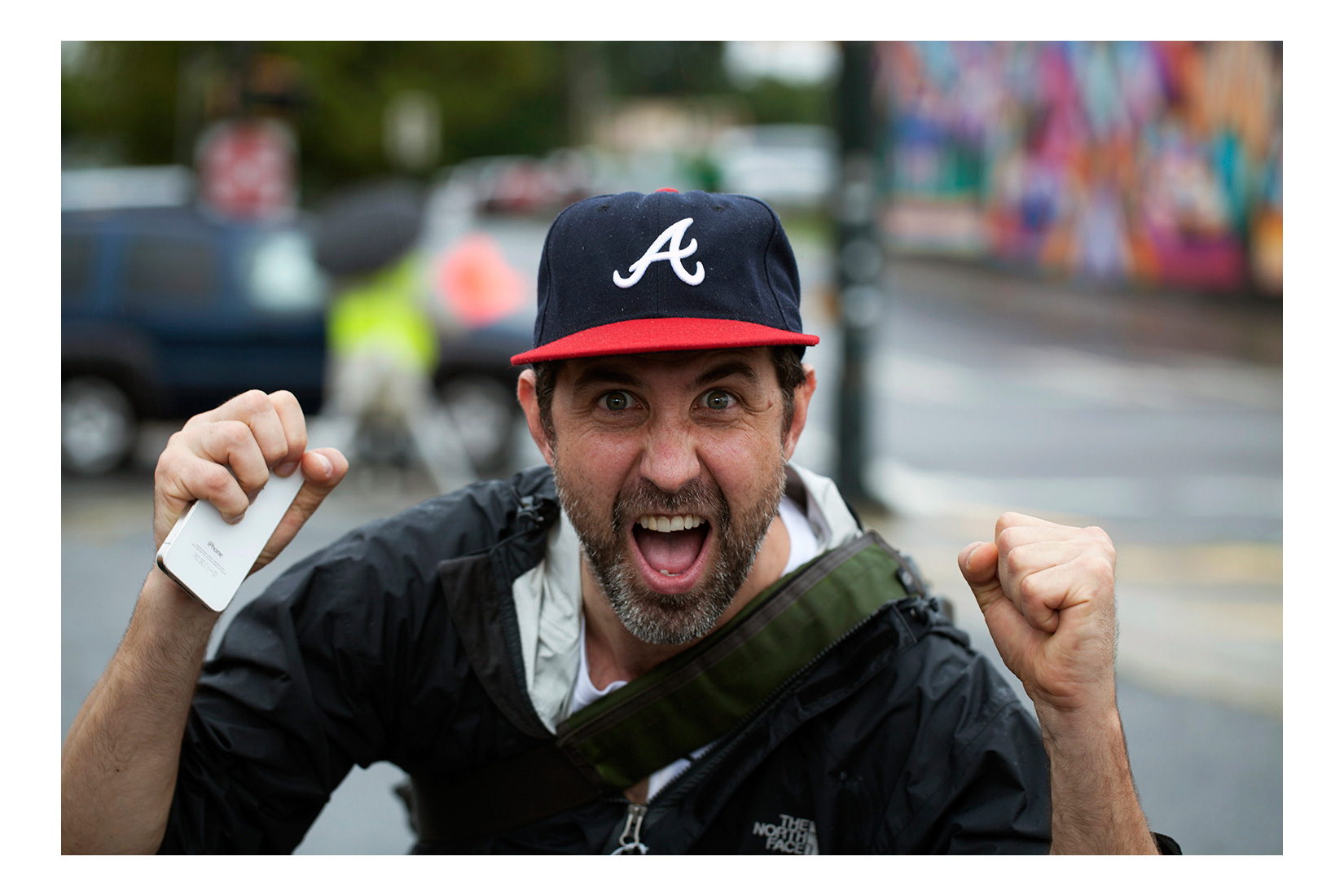Why Atlanta Isn’t the Worst Sports Town in America.
Here in the state where the average yearly temperature is 63.5 degrees, we do not peek out windows and wish for sun. There is no hibernating here. We wake up with the plan made the night before, which is to stuff gear into baseball bags, twirl a tennis racquet in our hand, drop fresh golf balls into the bag, squeeze the football between our mitts and pound the basketball into concrete to make sure it is still nice and round.
We go outside here. A lot.
The crustaceans in cities that measure passion for sports by Section/Row/Seat number don’t get it.
They trumpet their team spirit on Northern sports-yell radio stations, then wag their index fingers at Atlantans with shame and say, “Worst Sports Town in America,” because our fannies don’t routinely fill up the seats of Turner Field, the Georgia Dome and Philips Arena.
I wag my middle finger back.
We have better things to do. We don’t fawn over sportsmen. The iPad/iPod Generation of kids that lives here still wallops baseballs and can’t wait to don the armor of football. The adults who live here, who grew up before computers were personal and jeans were designer, play along with the kids. We are their cruise directors and happy to do it.
We are not the Worst Sports Town in America, we are the Best Sports Town in America, or at least among the best.
Why? Because we play.
The “Worst Sports Town in America” is the capital city of a state with more than 400 Division I football prospects. That’s in the top five nationally.
Only California and Florida produce more high school baseball stars than Georgia. Many of those baseball players come from, where else, the metro area of The Worst Sports Town in America.
The Worst Sports Town in America is in a state that ranks top five in NFL players per capita.
The Worst Sports Town in America has a nationally known amateur baseball program in Marietta that produces countless Major League prospects. Former Atlanta Braves scout Roy Clark, now the amateur scouting director for the Washington Nationals, has kept his home near the East Cobb baseball park for that very reason.
Only eight states have more NBA players than Georgia, and most of them come from The Worst Sports Town in America.
Just this summer, the Georgia Dome hosted soccer matches between Panama and Cuba and Mexico and Trinidad and Tobago and drew 54,000 fans.
Oh, and a local U19 women’s soccer team brought home a national championship. To the Worst Sports Town in America.
But it isn’t just future professionals getting trained here in The Worst Sports Town in America. You can see drivers stuff their cars into Medlock Park in DeKalb County on any given spring night to watch youth baseball. Soccer fields are teeming with children and adults. Kids flock to basketball courts around Atlanta on summer evenings, even if they never go near the NBA.
The idea that Atlanta is the Worst Sports Town in America started to get cooked up around the turn of the century.
The Braves were playing divisional playoff games in the late ’90s, and the sun-baked right field upper deck was pallbearer quiet. There was a direct line of sight from the press box to the upper deck for Chicago reporters, whose team is usually barren of postseason promise, and other national reporters. They flogged us Atlantans as sports incompetents for not filling up those seats.
The reputation endured.
Recently, a man from Denver was standing in the portal leading out to the right field seats along the foul line at Turner Field.
“They say Atlanta is the worst sports town in America,” I said.
“I can believe it,” he said.
Why?
“Look at all those empty seats up there in the upper deck.”
He pointed across the green to the left field upper deck. One fan in the distance filled up six seats with arms draped out over the backs of three seats and legs propped up on two more, which were on either side of the seat right in front of his spread legs, making that seat uninhabitable for anyone but his mate. Presumably, the fan paid for one seat, but he occupied six. No one cared because the seats around him were filled with air. The section looked empty all right, and Atlanta looked like a humdrum sports town to the man from Denver.
“Our ballpark is bigger than most,” I said.
He made that sniffing sound people make when they think you are full of it.
Author Ray Glier, alone in the cheap seats, Atlanta Braves vs. Washington Nationals.
ESPN’s Rob Parker sniffed, too, last year when he chastised Atlantans for not buying up seats in Philips Arena for a young, exciting Hawks team. And the national media took another bite when the Thrashers in 2011 became the second NHL franchise to leave Atlanta.
That hockey team went to the playoffs once between 1999 and 2011. And while they were swept in that series by the New York Rangers, “The New York Times said Philips Arena was one of the loudest venues they had seen that season,” according to Bruce Seaman, a nationally known economist who teaches at Georgia State University. We cared about hockey, and we rattled the rafters of Philips accordingly. Evidently, we cared a lot more than the owners, a group called Atlanta Spirit, which also owns the NBA’s Hawks.
Almost from the start, Atlanta Spirit began trying to unload the hockey team.They drafted poorly and didn’t develop players. The Thrashers were mismanaged from ownership down to the GM. They couldn’t compete on salaries.
Seaman says mismanagement played a significant role in Atlanta losing the NHL franchise and that Atlanta was not the first town to rebel against its hockey team’s owners. “People did the same thing in Chicago,” says Seaman, who earned his Ph.D. in economics from the University of Chicago. When Blackhawks fans saw owner “Dollar” Bill Wirtz committing similar sins of mismanagement a decade ago, Seaman says, “they stopped going to Blackhawks games ... and Chicago is a huge hockey town.”
Atlanta fans rebelled, too. We said fix it or we’re not investing. It was never fixed. The NHL wanted Atlanta fans to buy a house with termites. No thanks.
Still, the national media concluded that Atlantans hate hockey. After the loss of the Thrashers, Seaman says, Atlanta clearly has work to do on its reputation.
“Losing the Thrashers is a stain on Atlanta as a sports town,” he says. “There is no excuse for Atlanta not to have a representative in every one of the major sports. How the hell can you lose two teams?”
Hey, I didn’t say we were perfect. But it’s worth noting that, two years after the Thrashers became the Winnipeg Jets, the ice rinks in Atlanta still have to open at 5 a.m. to accommodate the hordes of stick-wielding kids who want ice time.
We must not hate hockey that much.
Boston, New York, Philadelphia, Cleveland, Baltimore ... all are cities that think they colonized sports for the Western Hemisphere. But is their fandom really as rabid as they swear it is?
Once upon a time, a baseball game was played in New York that has been written about as if it were the single greatest game ever played. The New York Giants beat the Brooklyn Dodgers with the “Shot Heard ’Round the World,” which was Bobby Thomson’s home run in the last at-bat to give the Jints the NL pennant in 1951. Gosh almighty, what a spectacle.
There were 15,000 empty seats in the Polo Grounds that day, according to the great baseball writer Roger Kahn. It was apparently a spectacle worth missing.
The Polo Grounds did not hold 70,000 for baseball, or even 60,000. The Polo Grounds held 49,000, which is about the seating capacity of Turner Field. There have been plenty of games at Turner Field with 34,000 fans. In fact, the Braves have attracted an average of more than 32,000 this season alone.
We understand value better than they do in Boston, New York, Denver, and Detroit, among other towns. When you show up at a pro sports venue with $10 in your pocket, the team wants to get $20 from you, and they usually do. There are unarmed bandits initialed A-T-M all over the ballpark. You don’t have to ask an usher twice where you can find one. You can even get an escort there, if you like.
Those extra bucks fleeced from New Yorkers at the pro game are our tokens at a batting cage, 10 swings per $1. Those bucks we keep in our accounts are a bucket of balls on the driving range, a squirt of gas toward the soccer field, a fresh basketball for the driveway cement.
Heat does not discourage us. In the summer, when an egg really will fry on an Atlanta sidewalk, high school football players cover the lush Bermuda grass for 7-on-7 workouts in the morning. The Bermuda grows thick down here, and fields do not have to be shut down for relief from play. The kids welcome the carpeted cushion and the chance to get better.
My 19-year old, Raymond, was a baseball player, a pretty good pitcher before shoulder problems. Now he would rather teach the game then go watch it.
“Let’s take a trip this summer,” I said.
“Where?” Raymond said.
“Wrigley Field, see the Cubs, see Chicago. First week in August.”
“Nah,” he said. “I’m going to work at this baseball camp. They need help, a lot of kids, extra money.”
You see? My 19-year old also would rather play than pay. This is how it is in Atlanta. We just don’t get any credit for it.
Okay, we’re not Portland. Portland is an outdoor paradise with parks galore and bike trails everywhere. It is as vibrant a sports town as you can find.
But Atlanta is getting there, no small thanks to the largest urban renewal project now underway in America: the BeltLine.
Seaman served as an advisor to the BeltLine, which will eventually link 45 neighborhoods around the city and ease congestion and promote prosperity. The BeltLine is using 22 miles of railroad corridors and multi-use trails circling downtown Atlanta to link the neighborhoods. It’s biking and walking galore for the city that doesn’t just watch sports, but lives sports. The project will make it easier to bike to work and provide access to parks and recreation.
Green space was not, until recently, a big priority for Atlanta’s city fathers. Historically, Atlanta has been a get-out-of-the-way-for-pavers city. We do cars. The politicians cave to the pave. They cozy up to developers and road builders, who finance elections and who want more public money to create more lanes of traffic.
“We have been hostile to public spaces, to walking, to jogging, bike, rollerblading,” says Seaman, who lives in Midtown and adores the oasis of Piedmont Park, which sits at the northern border of his neighborhood. Piedmont Park is to Atlanta as Central Park is to Manhattan. It is a hot spot of activity in the fall, spring and summer. But Atlanta’s 343 parks still make up only 5.6 percent of the city’s acreage, compared to a national average of about 10 percent.
The Belt Line is changing that. Before the BeltLine, Seaman says, “we were grossly under- parked in Atlanta. Our weather is great, but the lack of parks is an issue. In that regard, the BeltLine can be transformational.”
When umpire Sam Holbrook mangled the infield-fly rule call in the Braves’ wild-card playoff game against the Cardinals last Oct. 5, do you remember the reaction? Fury. Beer cans came whistling out of the stands. It was bedlam. Does that sound like a humdrum fan base?
The melee at The Ted was sparked by new arrivals. That’s what it looked like to me: 20- somethings and 30-somethings who were too young to be part of the “Worst to First Party” back in 1991, when the Braves stopped being a laughingstock. The fan base has matured. Once it was clear no one was hurt, I was delighted to see the October outburst. I mean, that’s an expensive can of beer to be throwing on the pile. That is some genuine passion.
It has been 10 years since the Braves were a dominant National League team, and their typical fan has gotten younger. There are second- and third-generation Atlantans walking the concourse at games who are rooting for their team, not their father’s teams — the Red Sox, Yankees, Cubs or Indians. Georgia State’s Seaman says he expects the Braves’ current run into the playoffs to be as raucous as 1991 because of this new crew of fans.
“If we get to the NLCS, it will be wild again,” Seaman says.
The awakenings aren’t just happening in baseball, he says. They are happening in football with the Falcons. The 20-somethings and 30-somethings who were born here, not transplanted here in the boom of the 1980s, will make it a vibrant fan base. Seaman says the older generation of Atlanta sports fans rooted for the Falcons only until the teams of their previous hometowns — the Vikings, Cowboys, Steelers, etc. — came to Atlanta.
The new generation doesn’t care now who is on the other sideline: The Dirty Birds are their team.
I do not test positive for the homer gene, the one that says I have to root for the home team. I have been a sports journalist for too long, looking at every team with skepticism, to root reflexively for the Braves or the Falcons or the Hawks or the Dawgs or the Jackets.
But I will root for Atlanta when I’m right. And on this subject, I’m right.
We have not even hit our stride yet, and we are already a Top 10 sports town, says me. Atlanta will be something to behold next month when the Braves take the best record in the National League into the playoffs. We will reveal ourselves to the rest of the country, who see our empty seats and call us empty souls who do not know how to root as if this were the last game we would ever watch.
But no matter how rabid Braves fans become this fall, a deeper truth proves Atlanta is not the Worst Sports Town In America. And trust me, you don’t have to be wicked smart to see it.
Here, I’ll give it to you with one simple exchange. I’ll take you inside our heads. “Let’s go to the Braves,” I said.
“Let’s go hit,” he said.
My 14-year-old, Alexander, wanted 50 minutes of my time, not $50 of my money. So he yanked batting gloves out of his baseball bag, and grabbed a bat and a helmet. I lugged the orange bucket of baseballs to the car.
We went to a batting cage. I threw, he hit.
There are two halves to Atlanta. It’s everyone else’s fault if they can’t see around the partition. They pay. We play.



